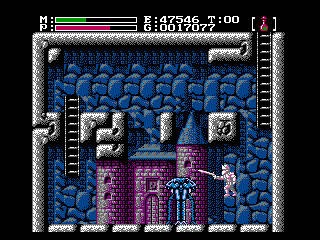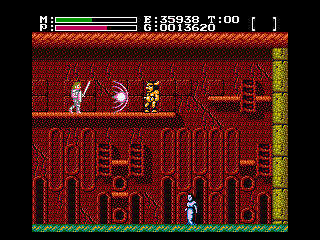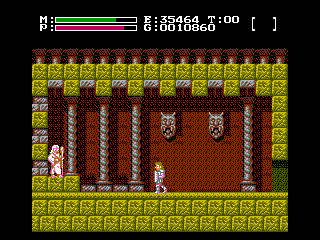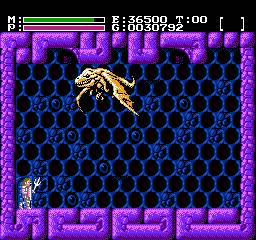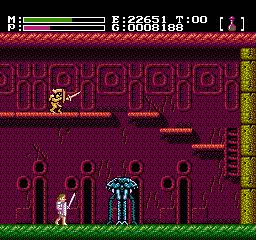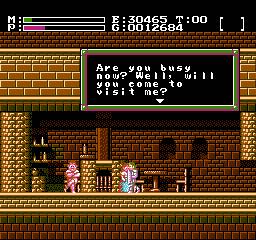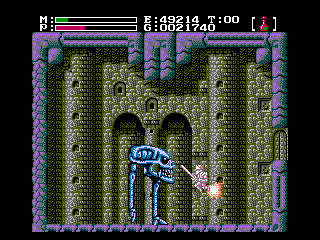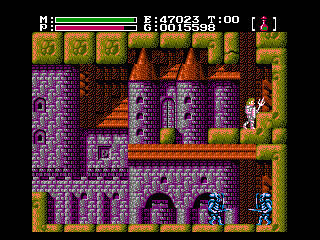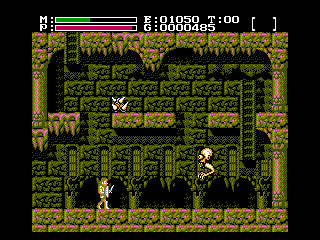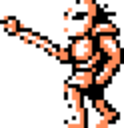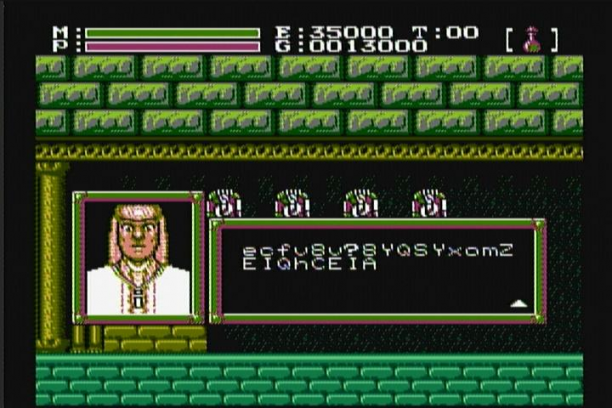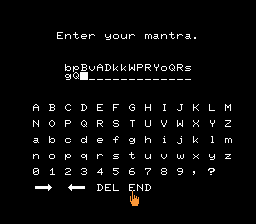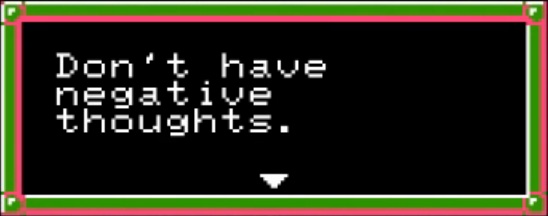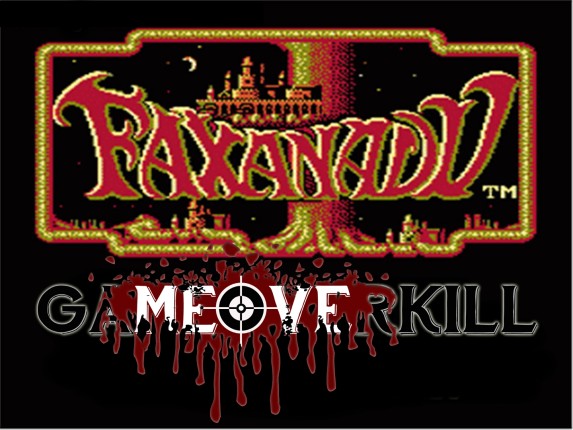
Game Overkill
Game Overkill – Faxanadu
I first played Faxanadu as a kid, likely during the first year it was released, so in 1989 or 1990. One of my aunts had rented it when I came over to visit. I immediately loved the game, despite the fact that it is impossible to kill the first enemy in the game. That might not sound like a big deal, but I probably died twice trying to kill that slow-moving spike-covered bastard, figuring there’s no way a video game would throw you in front of an enemy you can’t kill as soon as it starts. Right? RIGHT?! I’m starting to think I might have a thing for games that are a dick to the player: (e.g., Zelda II, Simon Quest).
Anyway, when I said I immediately loved the game, I wasn’t exaggerating. Here’s the first thing you see and hear in the game:
Jun Chikuma’s soundtrack is one of the best on the NES. You may know her from virtually every Bomberman game made from the original to 1998. If the title theme didn’t convince you, maybe the five other tracks I’m going to embed will convince you. They’re all only a couple minutes long, so you can likely just click play, read the next couple of paragraphs, and have the track end by the time you get to the next one.
Besides the great music, one of the first things that struck me about the game, and something I still find striking, is the visual. I had never seen a game that looked like Faxanadu and I haven’t seen one since. It was definitely not a typical bright and cheerfully coloured NES game. Sure, games like Castlevania look looked different from Mario, Mega Man, and Kirby, but even they still looked cartoonish when compared to Faxanadu. Apparently, I wasn’t the first one to notice this because when I visited Faxanadu’s Wikipedia page to double check the spelling of Jun Chikuma’s name, I saw a section of the article titled “Presentation” that pretty much said what I’d been feeling for decades, which was pretty nice validation.
All this vague talk of how “different” the game looks, and how “striking” it is, it must mean the game is ugly and I’m just trying to paint it in a positive light. Nothing could be further from the truth. The game is absolutely gorgeous. Take a look:
But the game doesn’t just look great and sound great, the look and sound work together with the game’s mythology to create a real atmosphere. The enemies, the townspeople, the levels, the backgrounds, the bosses; all of it is beautiful, but weird and creepy, and I’m not just talking about the blinking.
None of the enemies look like anything I’ve seen on the NES. As a kid, with pretty much any game my brother and I would play, we would give names to the various enemies. Most of the time, it was just animal names, like the bats in Ninja Gaiden, or something completely descriptive, like the Medusa heads in Castlevania. Sometimes, we’d later find out that the names we used were exactly what they were called in the game. Other times, we’d make up ridiculous names, like “jelly globbers,” for the Bits and Bots in Zelda II because we hadn’t played Dragon Warrior. With Faxanadu, we never gave any of the enemies names. I still don’t even know how to describe some of them, but let’s try:
- Is he wearing some kind of hat?
- Uhhhrrrr
- Ahhhhhmmmm
- Spiky…thing
- Lizard Guy
- Flying…thing
- CASEY JONES from the TMNT cartoons!
- Hmmmm….
- Uhhhhhhhhmmm….
- Cow Guy Thing
- Insane Birdo
- Lady…something?
Yeah, so that didn’t work very well, but you get the point. Whether I’m talking about the music, the enemies, the levels, or backgrounds, all aspects are very well done and look nothing like any other game from its time. As for the gameplay, it is no different. It is an action-RPG, like Zelda II, but not really. It reminds me of Castlevania a bit, and Metroid, but not quite either. You might think I’m about to argue that it’s the first Metroidvania game, but even though it comes close to describing it, it isn’t quite accurate. Maybe we could call it a proto-Metroidvania game? It’s the best I can come up with and action-RPG just doesn’t do the game justice.
In any case, in this proto-Metroidvania game known as Faxanadu, you need to save the World Tree. I won’t get into the whole mythology, mostly because it incorporates elements from so many disparate cultures, I can’t even begin to decipher it. Just know that the story is decent, but considering we’re talking about an NES game, the story is down right rich and layered. You have to kill the last boss is the short version of it, but to get there, you have to go to several different towns with weird names like Conflate, Eolis, and Forepaw, collect gold to buy better equipment and items, fetch a few special items, back track a whole lot once you’ve finally managed to get special items that unlock new areas, kill enemies for experience to level up, and explore the many branching paths of the World Tree, from its roots, to its trunk, to its branches.
The whole experience is fun, with a hint of frustration that makes it immensely rewarding. It isn’t so much that the combat is so great, because it isn’t. It’s not bad, but it can get a little repetitive. However, being able to explore this bizarre world, finding a new town, talking to townsfolk to get a better understanding of what’s going on: this is what I enjoyed the most about the game.
Now, the game isn’t easy. It’s not “Nintendo hard” though. There’s nothing in it that is practically iimpossible. You will die… A LOT, and every crushing defeat will mean having to redo significant portions of the game because you didn’t manage to get to a guru (or you forgot) to get your mantra. But at least you have the mantras, right? Aaaaaaaand this is when I’ll start with the negative aspects of the game: the mantras. They’re the game’s password system. Most towns have a guru (read: priest) who will give you a mantra. This is what you will use for a password to continue your game after you die or just stop playing and return to the game later. The problem with them is that they are excrutiatingly long, have numbers and punctuation, and have upper and lowercase letters. When you’re 9 and you write down your first mantra, you aren’t necessarily thinking that you need to make sure that you can tell whether that the circle you wrote down is 0, o, or O. If you can’t tell, those were a zero, a lowercase “oh,” and an uppercase “oh.” It’s the same thing with L/l/I/I. I quickly learned that you need to keep EVERY password and write them down often just in case you messed up the transcription of the latest one, so you can at least continue from the previous password.
My next complaint might be a little nitpicky, but an RPG really shouldn’t pull something like this: the text speed is painfully slow. I wish I had the time to make a GIF of it, but either take my word for it or go look at a gameplay video on YouTube. The text just appears so slowly and you can’t hit a button to have the entire text of what an NPC has to say. So if you want to know what that weird guy in the bar who maniacally blinks while talking has to say about the Dwarf King, or if you need to buy a key from that dude in the shop who looks like he’s blinking everything he says at you in Morse code, you’re just gonna have to sit there and watch all the letters appear,
o
n
e
b
y
o
n
e
.
My final complaint has to be the boss fights. They aren’t spectacular. It’s the one thing I think the game is missing that would make it go from 4.5 to a full 5 stars. They’re ok, but I feel like they could’ve been epic. Still, this is absolutely a game every retro gamer should put some time into. I’ve always been baffled by how much worse games seem to have joined the retro gaming cannon of great games, yet Faxanadu always seems to get left out. It deserves more respect. It is a thoroughly solid and enjoyable game. Yet, this project has shown me once again that it is often forgotten by most people. Faxanadu did not make the cut. It missed by a mere two votes. However, it is on my list of games I think everyone should play.
So, Faxanadu did not rank. What do you think of this? If you’ve played Faxanadu, let me know what you think. In the meantime, I fixed my Wii, so I’ll be picking up Skies of Arcadia Legends again. After that, I’ gonna go with something short: the original Mega Man.
